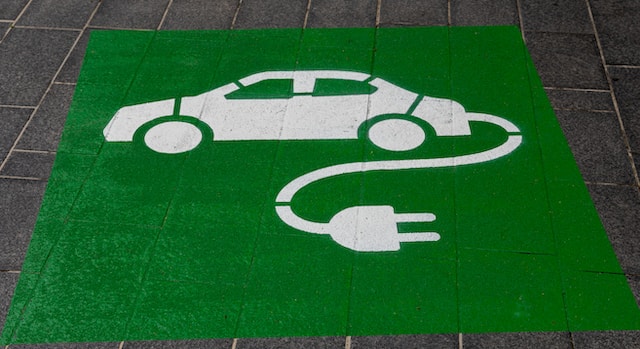Before I impart the new bad news, yesterday, Rob Roper looked at Vermont’s ridiculous, misguided spending decisions regarding school buses. They don’t have enough drivers, so when they got some money, they ‘invested it’ in electric school buses (for whom they still don’t have enough drivers).
But Rob skipped or did not have room for a point I wanted to make here.
A regular diesel school bus, the extended version you typically see, weighs 15,000 pounds empty and about 30K full (give or take). An Electric school bus weighs 33-36 thousand pounds … empty and presumably 40-45K loaded. The wear and tear on roads and bridges will be greater, and while I’m not familiar with all the roads and bridges in Vermont, there are likely a few of them you could not legally cross in an EV school bus becasue of the weight.
What’s the answer to that? If I had to guess, our V-bros to the Left would want to spend millions to rebuild any bridge or road that can’t manage the weight. I’m unsure how they plan to do that without fossil fuels, but that’s not my problem. But I bet they’ll find an excuse and no mention whatsoever about the other shortcomings like EVs not being green, reduced range in the cold (and it gets cold in Vermont), as well as other issues like fire risk, battery life, replacement cost, end-of-life carbon footie prints, and so on – to which we can add this.
An electric vehicle abruptly stopped in the middle of a busy road near Salisbury, England, and remained immovable for most of the day, causing a nine-hour traffic bottleneck. …
A team of workers was unable to move the stranded EV because “the handbrakes of electric cars, and some other modern cars, are controlled electronically, unlike those of traditional petrol and diesel cars which are mechanical,” the report said.
“This means that the handbrake often locks when the power fails and the car cannot be pushed or towed,” it said.
One hefty 75,000.00 Dollar brick. Heavy as hell and stuck. This one blocked traffic for nine hours before they managed to get it out of the way, which – if I had to guess – resulted in a ton of unnecessary emissions from the backup. Another win for team green, to which we can add – don’t damage the thing while you’re trying to move or tow it. The slightest dent or damage could result in a costly repair.
My second “Is it too soon for a bit of bad news about EVs?” is this.
25 refrigerators.
That’s how much the additional electricity consumption per household would be if the average US home adopted electric vehicles (EVs).
Congressman Thomas Massie—an electrical engineer—revealed this information while discussing with Pete Buttigieg, the Secretary of Transportation, President Biden’s plan to have 50% of cars sold in the US be electric by 2030.
The current and future grid in most places will not be able to support each home running 25 refrigerators—not even close. Just look at California, where the grid is already buckling under the existing load.
That’s a lot of additional electricity that no one can deliver. We lack the generating capacity and the transmission infrastructure, but hey – 2030 is six years away (plus a few months). Why should we doubt that the same people who can’t get anything else right will have it solved in time? Because they won’t or can’t, and they probably know that too.
It’s like that other EV fail we discussed last year (Hurican Ian) that showed its ugly face again as hurricane Idalia drifted across the American Southeast. Lithium Car batteries do not respond well to being drenched, be it seawater or freshwater incusions. They can corrode quickly, fail, catch fire, or explode.
Electric vehicles catch fire after being exposed to saltwater from Hurricane Idalia
“Saltwater exposure can trigger combustion in lithium-ion batteries. If possible, transfer your vehicle to higher ground,” the Palm Beach fire department wrote in a Facebook post.
Two electric vehicles in Palm Beach, Florida caught fire after being exposed to saltwater from Hurricane Idalia, according to reports.
Officials from the fire department said that both cars were Teslas and stated that the rechargeable car batteries might combust if exposed to saltwater.
“If you own a hybrid or electric vehicle that has come into contact with saltwater due to recent flooding within the last 24 hours, it is crucial to relocate the vehicle from your garage without delay,” the department wrote in a Facebook post. “Saltwater exposure can trigger combustion in lithium-ion batteries. If possible, transfer your vehicle to higher ground.”
The warning also extended to other vehicles with lithium-ion batteries such as electric golf carts, scooters and bicycles.
As I noted ironically in 2022, how do they plan on classifying forest fires started by compromised EV batteries, regardless of the cause? Lithium batteries burn hot, fast, and furious, igniting everything around them. And how planet-saving is it when every time you have suitably inclement weather, every shoreline-loving prog (despite the threat of catastrophic sea-level rise) has to drive their EV (in an EV exodus traffic jam becasue all their neighbors are greenwashing along with them) to higher ground to ensure it doesn’t ignite and emit tons of toxic metals into the fragile biosphere.
Do we need special parking? Will they have to park 15 feet apart to avoid igniting nearby vehicles? And how will they get home and then back to the EV after the storm, and how much CO2 will that emit?
And how amusing it is that the solution is to buy a cheaper, increasingly more friendly combustion-engined vehicle.
